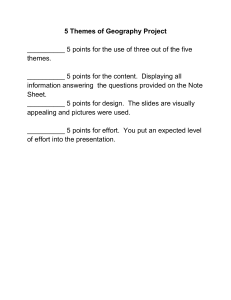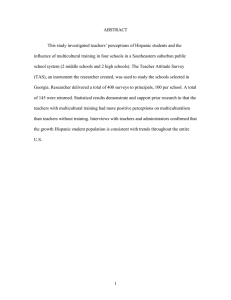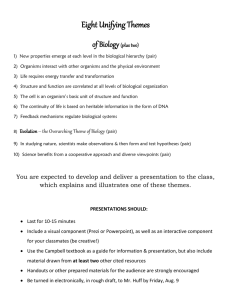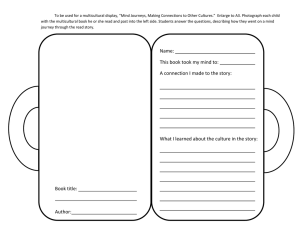These four articles were to me very interesting to read... spectrum of how one might interpret the ideology framing multicultural...
advertisement
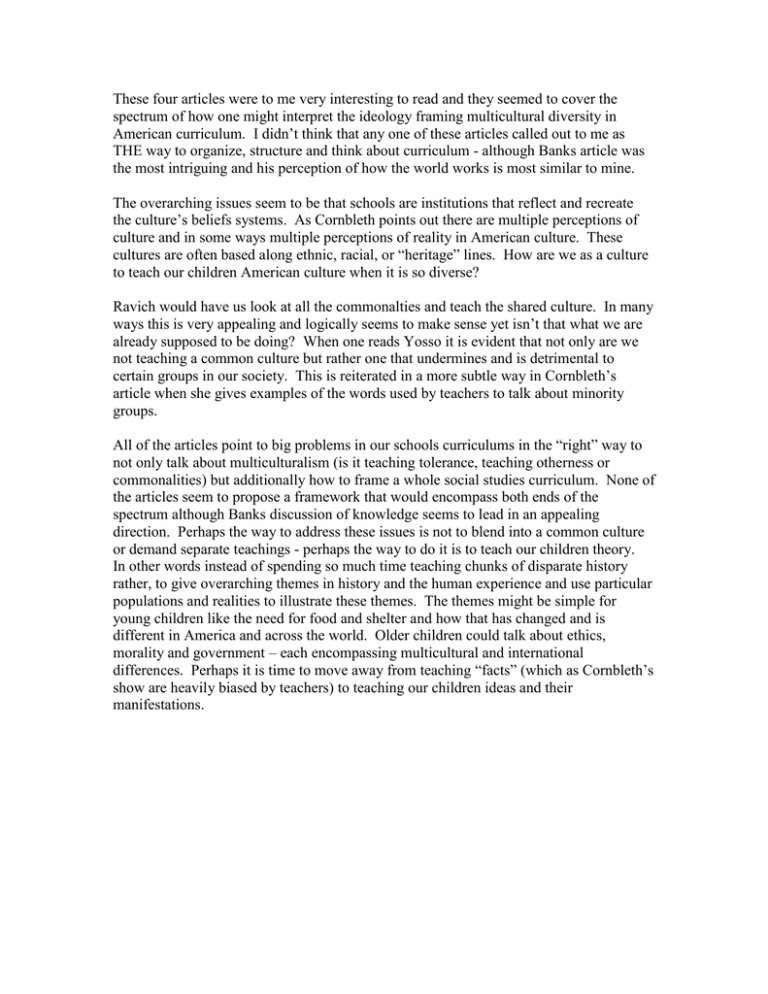
These four articles were to me very interesting to read and they seemed to cover the spectrum of how one might interpret the ideology framing multicultural diversity in American curriculum. I didn’t think that any one of these articles called out to me as THE way to organize, structure and think about curriculum - although Banks article was the most intriguing and his perception of how the world works is most similar to mine. The overarching issues seem to be that schools are institutions that reflect and recreate the culture’s beliefs systems. As Cornbleth points out there are multiple perceptions of culture and in some ways multiple perceptions of reality in American culture. These cultures are often based along ethnic, racial, or “heritage” lines. How are we as a culture to teach our children American culture when it is so diverse? Ravich would have us look at all the commonalties and teach the shared culture. In many ways this is very appealing and logically seems to make sense yet isn’t that what we are already supposed to be doing? When one reads Yosso it is evident that not only are we not teaching a common culture but rather one that undermines and is detrimental to certain groups in our society. This is reiterated in a more subtle way in Cornbleth’s article when she gives examples of the words used by teachers to talk about minority groups. All of the articles point to big problems in our schools curriculums in the “right” way to not only talk about multiculturalism (is it teaching tolerance, teaching otherness or commonalities) but additionally how to frame a whole social studies curriculum. None of the articles seem to propose a framework that would encompass both ends of the spectrum although Banks discussion of knowledge seems to lead in an appealing direction. Perhaps the way to address these issues is not to blend into a common culture or demand separate teachings - perhaps the way to do it is to teach our children theory. In other words instead of spending so much time teaching chunks of disparate history rather, to give overarching themes in history and the human experience and use particular populations and realities to illustrate these themes. The themes might be simple for young children like the need for food and shelter and how that has changed and is different in America and across the world. Older children could talk about ethics, morality and government – each encompassing multicultural and international differences. Perhaps it is time to move away from teaching “facts” (which as Cornbleth’s show are heavily biased by teachers) to teaching our children ideas and their manifestations.
